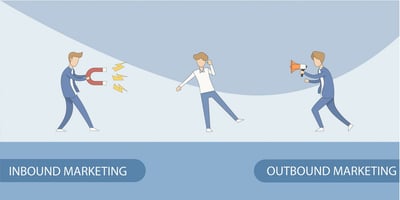
I once remember way back in the 90s feeling like a dummy because I seemed to have been the last one to try a piece of Tiramisu when it was sweeping across the world’s dessert tables. I felt just as bad again a few years later when I returned to the US to realize that my pronunciation of “Tiramisu” learned while living in Japan wasn’t remotely close to how it was pronounced in English!
But as someone who has been living and practicing the methodologies of Inbound Marketing for over ten years and seeing it bring great results, I thought once for a TINY moment I could enjoy that same look of cultural superiority that looked down on my Tiramisu-ignorant face when someone would dare ask me about Inbound Marketing. But alas, that is instinctively a bad first impression for a potential new client! And honestly, I’m not good at pulling intellectual or cultural snobbery on others (wearing shorts year-round will do that to a guy…), and find it much more rewarding to share some insights that might help you – the same way I would have appreciated a kind look and quiet explanation from a waiter when I first asked so innocently, “What is this Tiramisu thing here?”
If you are new to Inbound, this is just a start. Please feel free to ask me any questions or for more information. No judgment!
Back to the Question: What Is Inbound Marketing?
 The simple answer is that Inbound Marketing is a business methodology that attracts customers by producing content and experiences tailored to them and that they, therefore, find valuable and helpful. Outbound Marketing (like cold calling, print or online advertising, and radio ads) finds potential customers where they are and presents them with the information they did not ask to receive. Inbound Marketing aims to form connections and offer solutions to draw clients in.
The simple answer is that Inbound Marketing is a business methodology that attracts customers by producing content and experiences tailored to them and that they, therefore, find valuable and helpful. Outbound Marketing (like cold calling, print or online advertising, and radio ads) finds potential customers where they are and presents them with the information they did not ask to receive. Inbound Marketing aims to form connections and offer solutions to draw clients in.
Inbound Marketing is also about making yourself “findable” to customers. Of course, the best-case scenario is that a client finds you and immediately purchases whatever you’re marketing. Still, the more common scenario is that the customer sees you before they are ready to buy. It is then that early contact that nurtures a brand preference and education that can ultimately lead to their purchase and, therefore…revenue!
Examples of Inbound Marketing
There are many ways to pull in potential customers and craft brand awareness that will eventually lead to new business. Some of these include:
 Blogs - a regularly updated website or page that is written in an informal or conversational style. Typically between 600-1200 words.
Blogs - a regularly updated website or page that is written in an informal or conversational style. Typically between 600-1200 words.- Events or Webinars - an in-person or online event that is either low cost or free to potential clients where they receive expert advice or training while also learning more about your business.
- Search engine optimization (SEO) - the process of improving both the quality and quantity of traffic of your website or page that comes from search engine results. SEO aims to garner unpaid traffic rather than paid traffic by ranking higher on search engine results than your competitors.
- Social media - virtual interactions that can be conducted on various platforms based on your target audience and shared ideas, interests, and preferred method of communication. The most popular platforms are Facebook, Twitter, Instagram, LinkedIn, and YouTube.
- Facebook: The best platform for organic engagement as a “friend” or “follower” can see someone interacting with a piece of content and decide to also engage.
- Twitter: Positioning yourself as a subject matter expert is critical on this platform. Relevant hashtags will allow your posts or “Tweets’ to be more easily found in the current stream.
- Instagram: A heavy image and video-based platform that allows you to engage with your customers in a very informal way. Behind-the-scenes videos or customer testimonials do well here.
- LinkedIn: This is undoubtedly the preferred platform for B2B (business to business) influence and brand awareness. Best used to showcase relevant business content to other professionals and expand your reach.
Final Thoughts
Inbound Marketing is all about turning strangers into informed, excited customers who know, like, and trust your brand. Creating relevant, informative, and engaging content is the first step. This requires knowing your target audience and meeting them where they are. The most important part is consistency, whether by varying your social media platforms or building an email marketing strategy.
So start the conversation! There are no dumb questions. A conversation over a cup of coffee and a nice Tiramisu might be the best first step in a successful Inbound Marketing journey.




